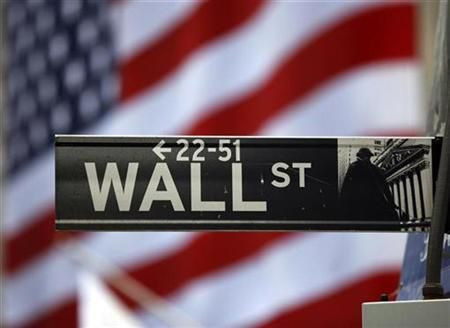Stocks Look Cheap, But D.C. Looks Cheaper
Opinion

Stocks in the S&P 500 are now at record low valuations; the market trades as cheaply as it did in 1980 as measured by price-to-earnings, or PE, ratios, trading at a PE ratio of 15.4 times earnings.
While retail stock investors have largely been stuck on the sidelines, the stock market has made new highs. But despite the upward surge, things aren't as rosy for Wall Street as one might suppose.
Although individuals have added almost $20 billion to U.S. stock funds so far this year, the amount is just 3.5 percent of the withdrawals since 2007, Investment News.com reported, and compares with $44 billion placed with fixed-income managers in 2013, according to the Investment Company Institute.
Fund inflows tend to buttress the beliefs of those who think the stock market’s short-term bull run can continue. As the old adage goes, individual investors don’t make money in the market, they just borrow from the institutions for a while.
The lack of participation by retail investors in the continuing rally would seem to indicate we have yet to hit a top -- because the retail money has yet to hit the market. And that’s the line of reasoning I would have used 10 years ago. But a lot has changed in 10 years.
There’s a growing sense of alienation between Wall Street and Main Street. Much of the alienation has to do with the lack of the right type of oversight on money and markets. That lack of confidence, which is largely political in nature, hurts PEs.
Last week, Attorney General Eric Holder, for example, announced he'd have difficulty prosecuting too-big-to-fail management, not because there was no violation of the laws, but simply because it might affect the economy at home and abroad.
"I am concerned that the size of some of these institutions become so large that it does become difficult for us to prosecute them when we are hit with indications that if we do prosecute -- if we do bring a criminal charge -- it will have a negative impact on the national economy, perhaps even the world economy," Holder told senators this month. "I think that is a function of the fact that some of these institutions have become too large."
So in other words, people like former Barack Obama economic capo, Democrat Jon Corzine, will be off the hook after his firm, MG Global, “misplaced” $1.6 billion in customer-segregated accounts in one of the top 10 bankruptcies in the country’s history.
And make no mistake: Those customer segregated accounts were supposedly off limits in the same way I’m not entitled to spend money in your checking account.
Corzine and MF Global aren't the only examples either. They’re just ones that conservatives -- like me-- like to use.
For every Corzine on the left, there’s a Hank Paulson on the right trying to game the system. The issue, therefore, transcends left and right labels. The financial system we have now is a product of both sides of the aisle, and it would be wise for the political parties to admit as much.
The result of this bipartisan regulatory debacle has been that in dollar volume, the number of initial public offerings in 2011 was around $27 billion versus $31 billion in 1993. In 1993 -- before Glass–Steagall was repealed -- there were 509 offerings. In 2011, there were 81 offerings, according to Professor Jay Ritter, of the University of Florida.
What these numbers mean is that over a period of time when world wealth was growing from $25 trillion to $64 trillion, the number of initial offerings in what are supposed to be the greatest financial markets in the world fell by 84 percent.
But there's hope.
Senators David Vitter, R-La., and Sherrod Brown, D-Ohio, introduced a resolution this week in the Senate that would help end the too-big-to-fail guarantees that the federal government now gives bigger banks, thereby depressing competition by smaller banks.
The resolution passed 99-0. And although it doesn’t have the force of law, the vote means that Vitter and Brown will try to pass something before the 2014 elections.
"I think momentum will continue to build in the spring and summer and real traction will be achieved in the fall" said Camden Fine, president and CEO of the Independent Community Bankers of America, of the Brown-Vitter bill. "Between now and the midterm elections, you'll see bipartisan legislation pass the Congress that attempts to deal with too big to fail and too big to jail."
That’s the kind of confidence-boosting measure that could get the markets back to business.
John Ransom is finance editor at Townhall.com and the host of Ransom Notes, a nationally syndicated radio show covering the connection between politics and finance.
© Copyright IBTimes 2024. All rights reserved.





















